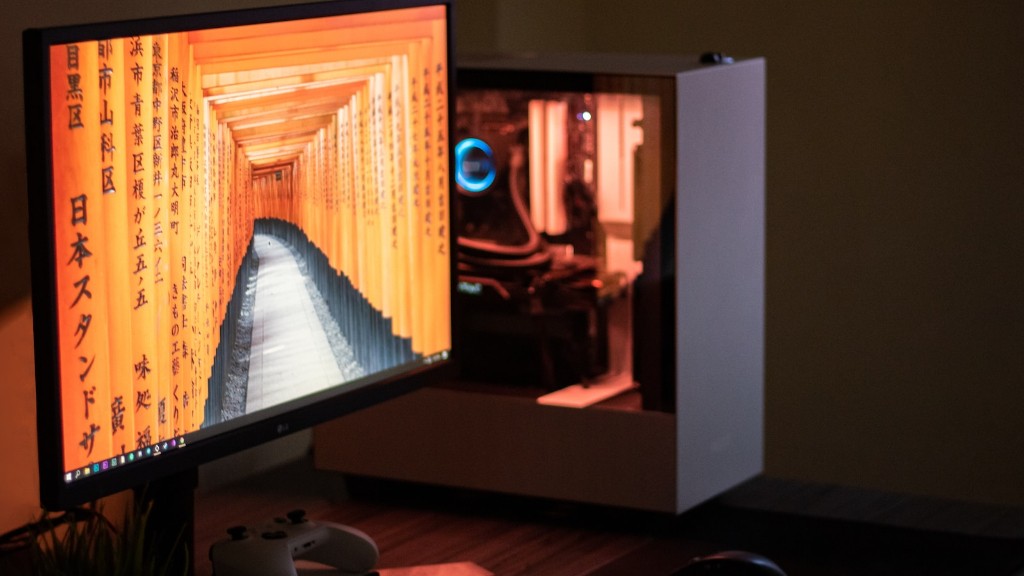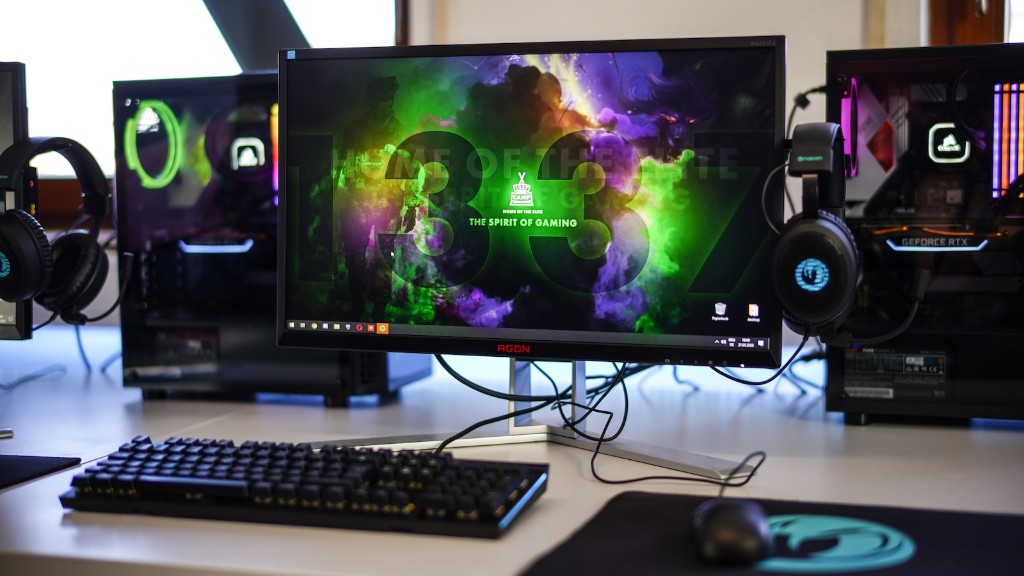2. To select the components for a gaming PC, the foremost requirement is to detect a CPU socket type which would support the installation of the processor. Specific processors are generally designed to fit specific sockets, so the selection ofprocessor should be made by consulting CPU compatibility charts found on the manufacturer’s website.
3. The next step is to determine the type and size of motherboard. These are comprised of two parts; the chipset and features such as support for differentsizes and types of memory, multiple storage options, and a variety of I/O. Furthermore, depending upon the computer, the chassis and the cooling mechanism should be compatible with the motherboard.
4. The selection of GPU or the graphics card is probably the most important part for a gaming PC. There are many options to choose from and all brands have competitive models. The current long term favorites include the AMD Rx series, Nvidia series, EVGA and Nvidia GeForce GTX 10 series.
5. A gaming PC’s performance is amplified by the installation of quality RAM, so the choice should be carefully made. As technology is evolving, the RAM type and size should be based on the motherboard compatibility and other components.
6. To store the data and files, storage drives such as HDD and SSD are available. The Hard Disk Drives are older technology but are cheaper and provide large capacity, whereas the new age Solid State Drives are small in size but faster, more reliable, longer lasting and all around more efficient.
7. The last, and often overlooked, component for a gaming PC is the power supply unit. It is important to research the power consumption of all the parts and components and select a PSU that covers that for reliable use.
Choosing the Right Processor
1. Choosing the right processor for your gaming PC is the most important step in the whole process. Factors like processor speed, process architecture, compatibility with other components, number of cores and threads, etc., should all be taken into consideration. Most budget gaming PC’s are designed to utilize modern, quad core processors.
2. Processors are made by two main brands: Intel and AMD. Intel and AMD processors tend to offer more cores and threads than other brands, which makes them a more popular choice among PC gamers. Modern processors come in various sizes, which need to be fitted into the right size of the motherboard. So it is important to match the right processor to the right socket otherwise it will not work.
3. Typically, single core processors can function well for normal tasks like surfing the net or video streaming. But for gaming, higher core processors are needed. The recommended processor frequency is 2.20 GHz and above; this is especially recommended for high end gaming.
4. As technology advances, so does the processors used in computers. Latest processors require more power and have higher wattage, so it is important to make sure that your motherboard is capable of running the latest processors. To make sure that your system is well-prepared for the latest processors, it is best to go for a higher wattage power supply.
5. Furthermore, it is also important to ensure that the processor you select is compatible with the best graphics card, RAM and storage. It is essential that your processor should comply with your desired graphics card, as they usually support different processor types.
Motherboards
1. It is important to choose the right motherboard for your gaming PC needs. Quality motherboards come in multiple form factors, sizes and with different levels of functionality. To make sure you go for the best board, consider the factors such as maximum RAM amount, video card compatibility, processor type and number of PCI/PCI Express slots.
2. Motherboards are comprised of two parts; the chipset and features such as support for different sizes and types of memory. The chipset provides the chipset with the necessary functionalities while the features like memory, storage options and a variety of I/O provide the necessary connectivity options.
3. Popular chipsets used in modern motherboards are Intel’s Z390, H370, B360 and H310 chipsets. For AMD users, the most popular chipsets are the X470 and B450 chipsets. These chipsets are typically used for entry level to mid-level gaming PCs. For high-end gaming, X570 chipset is recommended.
4. In terms of video card compatibility, it is important that the motherboard supports the latest GPUs and powerful video cards. This can be found in the motherboard’s specifications; the latest GPUs like the NVIDIA GTX 10-series have quite large power requirements. To make sure your graphics card works with the motherboard, it is advisable to get a board that supports multiple video outputs.
5. For SSD support, many motherboards come with M.2 slots for high speed SSDs, which are great for gaming. It is also important to look for Purity Sound 3 audio support, which can provide more immersive audio experience during gaming. Furthermore, the number of USB ports and additional features like Wi-Fi and Bluetooth are also important to consider.
Graphics Cards
1. As graphics cards are the most essential component for gaming, paying special consideration to their selection is important. Players should pick the right graphics card in accordance with the required specifications and budget constraints. Moreover, it is essential to check the power supply requirements, since more powerful GPUs need more wattage.
2. The most popular brand for PC gaming is NVIDIA. It produces various series of graphics card ranging from budget cards to enthusiast level GPUs. Some of the favorite cards from the latest Nvidia series includes the GTX 1060, 1070 and 1080. They have great performance and value for money.
3. For gamers who are running on a budget and are looking for GPUs which provide amazing performance at a cheaper price point, the AMD Rx series is a great option. The AMD Rx 470 and the AMD Rx 460 are great cards for beginner gamers and provide amazing performance for price.
4. In terms of performance, both AMD and NVIDIA have their pros and cons. While NVIDIA cards generally have higher performance than AMD, they usually come with a much higher price tag. However, some GPUs from AMD may provide the same performance, but at a much cheaper price.
5. The number of video outputs in the card also plays an important role. Most gamers don’t use multiple monitors, but having the option to is always beneficial. It is also important to ensure that the graphics card supports the latest hardware and software features, as these may improve a game’s performance or visual fidelity.
RAM
1. Memory or RAM is another very important component of PC gaming. As technology is evolving, the type and size of RAM should be based on the motherboard compatibility and other components.
2. There are two types of RAM: DDR3, which is the older type of RAM, and DDR4 which is the latest and greatest in terms of speed and power usage. The plan for the gaming PC should be to pick the largest amount of RAM possible, as having more RAM will provide more performance.
3. Generally, 8GB is ideal for gaming as it is able to handle high-end games and other intensive applications. For example, for an Intel Core i5 processor, 8GB is enough for day-to-day gaming. But going for 16GB RAM can help in preventing drops in framerate during intensive gaming sessions.
4. For those looking towards high-end gaming on the highest settings, more RAM is recommended. For example, if a player wants to play games such as GTA V and Witcher 3 on the highest settings, then 16GB or 32GB of RAM should be chosen.
5. Furthermore, it is also important to note that RAM speeds also play a role in gaming. A higher speed RAM can help increase the performance of a gaming PC, compared to a lower speed RAM. To achieve the ultimate gaming experience, it is recommended to go for RAM with speeds at least above 2133 MHz.
Storage Drives
1. To store the data and files, selection of storage drives such as Hard Disk Drives (HDD) and Solid State Drive (SSD) is required. The Hard Disk Drives are older technology but are cheaper and provide large capacity, but they are slower compared to their alternatives.
2. On the other hand, the Solid State Drives are the new age drives, they are faster compared to Hard Drives, but they are smaller in size with less capacity. They are more reliable, longer lasting and all-around more efficient.
3. For a gaming build, it is ideal to have both an HDD and SSD so as to have enough room to store games and applications, as well as have access to faster loading times. It is highly recommended to have an SSD to store the operating system, as it has great boot times and makes the OS more expressive.
4. For those who are ready to invest in short term performance, there is the option of installing multiple SSD’s in a RAID array for maximum performance. This method uses two or more SSD’s in a RAID controller so as to access the same data, thus effectively increasing the transfer speeds.
5. Also, while selecting a storage drive, it is important to make sure that it is compatible with the power supply, motherboard and other components. For example, SATA is traditionally used for HDDs, M.2 and PCIe are used for SSDs and many power supplies don’t come with enough SATA connectors to power both a GPU and two storage drives, so check before investing in storage components.
Power Supply Unit
1. The last, and often overlooked, component for a gaming PC is the power supply unit (PSU). It is important to research the power consumption of all the parts and components and select a PSU that covers that for reliable use.
2. For example, a 1050W or higher power supply should be purchased for a high end gaming PC. Also, if multiple components are purchased which require more wattage, it is important to consider buying a higher wattage PSU.
3. It is also important to take note of the quality of the power supply, as quality PSUs have longer lifespans and have greater efficiency. Generally, it is recommended to go for PSUs which are 80 plus certified, as these are considered to be more reliable and of good quality.
4. Also, ensure that the power requirements of the PSU comply with your desired graphics card. For instance, an NVIDIA GTX 1080 requires a minimum of 500W power supply and two 6-pin PCIe power connectors.
5. Furthermore, it is also important to check the number of SATA and Molex connectors in the PSU. To power many components, the PSU should have enough SATA and Molex connectors. Lastly, it is important to make sure that the PSU is compatible with your motherboard.

